Day Four Lakeland - Cooktown
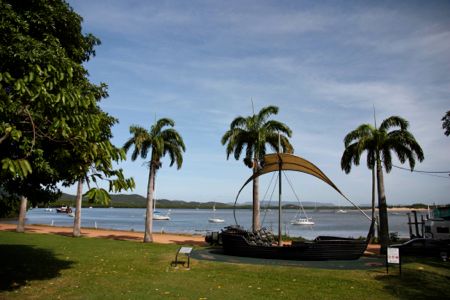
After the previous day's exertions an easy stage was definitely the way to go, and we headed off from Lakeland just after eight, following a brief discussion about breakfast options. The nearest source of morning nutrition was the roadhouse at Lakeland, which involved a right hand turn and a short southward stretch past the Laura turnoff. The alternative was, of course, to head straight into Cooktown and do the brunch bit there.
The brunch bit there, predictably, won.
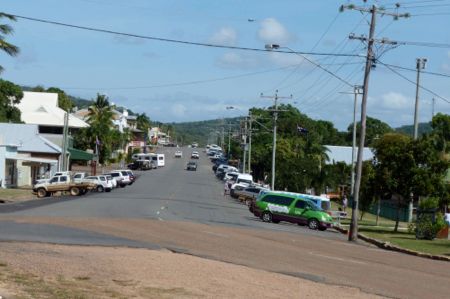
Travelling on the ground thirty-five plus years after my Cooktown Frontier conflict research I was interested to spot anything that more or less tied in with that generation-back reading, and it's not too surprising to learn there wasn't much of it around until we hit the rivers. We must have sailed past a turnoff to Kings Plains, since I subsequently spotted the name on the map but it wasn't until we hit the Normanby and the Annan that I found things that coincided with distant historical memory.
At this point, given the fact that the next bit of the narrative is more or less we got to Cooktown, had breakfast and a good look around, grabbed a spot of lunch and headed off to the accommodation and took a break until dinner time, it's probably time for Hughesy's Cooktown history lesson, which might differ from what readers are accustomed to seeing. predictable, since much of what actually interests me hasn't been written (much). So if you’re interested in the chain of events that brought Lieutenant Cook (he was promoted to Commander in August 1771 and made post or promoted to Captain in 1775) to the Endeavour River in June 1770 you can click here.

In the process of saving his ship, Cook had, however, found a rather handy anchorage that was subsequently visited by Philip Parker King and Allan Cunningham on HMS Mermaid in 1819 and 1820 and Captain Blackwood (HMS Fly) and Lieutenant Yule on the Bramble in 1843.
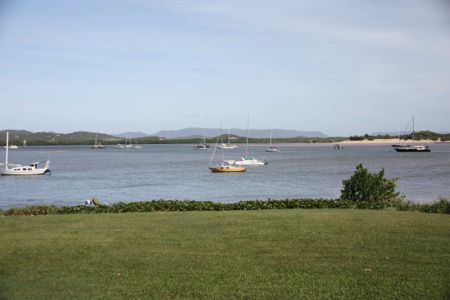
The anchorage came in handy again after James Venture Mulligan found gold in the Palmer River in 1873.
Gold had actually been found in the river by William Hann's expedition in 1872, but that seems to have been a Government sponsored general purpose get out and see what’s out there trip around the back locks rather than a serious quest for gold, which had already been found on the Etheridge, at Gilberton and at various other sites around the north.
The key issue here was whether it was payable gold, in sufficient quantities to allow the miner to make rations or pay for his tucker. If you could make rations, the field might work. if you couldn't it wouldn't.
Making rations, of course, applied to European miners. The sums were different where the Chinese were concerned.
In any case, Hann reported gold, though not in payable quantities, and various experienced miners, including Mr Mulligan reckoned he was a grazier who probably wouldn't know payable gold if it came up and bit him in the leg, and set out to take a look for themselves.
Mulligan reached the Palmer on 29 June, struck payable gold on 12 August and was back in Georgetown, the centre of the Etheridge Goldfield, on 3 September with 102 ounces of gold (that's just under three kilograms in the new money, folks). Mulligan stayed on the Etheridge just long enough to report the find and collect fresh supplies. News of his discovery had a hundred men and three hundred horses heading out of the Etheridge with Mulligan in September 1873.
Do the sums yourself. At today's gold prices, three kilograms (let's keep things in round figures here) would be worth something in the order of one and a half million dollars.
The Queensland Government, in their constant quest for things that would create revenue, had commissioned an expedition with George Elphinstone Dalrymple in charge to sail north from Cardwell and investigate prospects along the coast between Rockingham Bay and the Endeavour.
Dalrymple had two small cutters, the Flying Fish and the Coquette, a party that was heavy on Native Mounted Police, and instructions to check out the countryside and link up with a party that would head down from the Palmer headed by his old mate Philip Sellheim.
Dalrymple and Sellheim went way back, at least as far back as the declaration of the Kennedy Pastoral district on 1 January 1861. Dalrymple had been appointed Lands Commissioner for the new district and held a little New Years party for selected friends to allow them to select prime real estate straight off the map, sight, more or less unseen (you'll find the actual details in Jean Farnfield's Frontiersman: a biography of George Elphinstone Dalrymple, assuming you can track down a copy).
In any case Dalrymple set off with his two cutters loaded with Native Police, took a good look at things along the way and ended up landing in the Endeavour River on 24 October 1873. The two vessels weren't large enough for the party to sleep on board, so once they'd reached the destination they started unpacking the following morning, preparing to settle in until Sellheim arrived on the scene and the Native Police contingent could head up to the Palmer.
They were in the middle of setting up camp the following morning when the masts of a ship appeared above the mangroves at the mouth of the river and shortly thereafter Dalrymple learned of a change of plan. The Government had changed its mind, told Sellheim to hold his horses, and chartered the steamer Leichhardt to carry newly appointed Goldfield Commissioner Howard St George, engineer Archibald Macmillan assorted officials and seventy-nine miners to the Endeavour and have them blaze a trail from the port to the goldfield rather than from field to port.
So, knowing the story, once we'd arrived in Cooktown, the obvious first item on the agenda was breakfast, and the most likely source was Charlotte Street, which conveniently runs past the points where Cook beached the Endeavour, Dalrymple set up his camp and the Macmillan party landed.
And the obvious thing to do after breakfast was to take a stroll along the main drag, scope out the town and see whether I could visualise the events of 25 October 1873.
Unsurprisingly, that's not as easy as the casual observer might think. The arrival of the Leichhardt sparked a remarkable boom, and there were at least four wharves constructed along the shore near the river mouth, which meant things like mangroves had to go, which they did. One would guess there was a certain amount of dredging and reshaping of the entrance, so the twenty-first century observer watching a fishing boat towing a string of dories coming back to port is quite possibly watching a vessel crossing water that wasn't there a hundred and forty years ago.
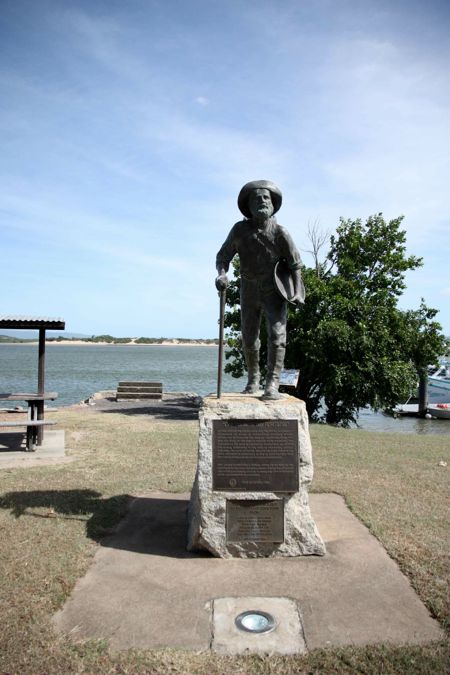
Still, if you couldn't quite visualise the masts coming over the mangroves, with your back to the town looking over the estuary you could imagine things from the point of view of a disembarking miner because it looks like not much has changed over on the north shore.
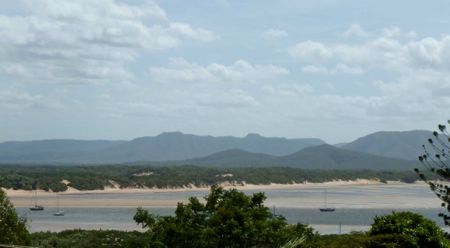
The stroll around the town took us along the northern side of Charlotte Street out as far as the jetty for the Pilot Launch and back along the south side, past plenty of vacant allotments.
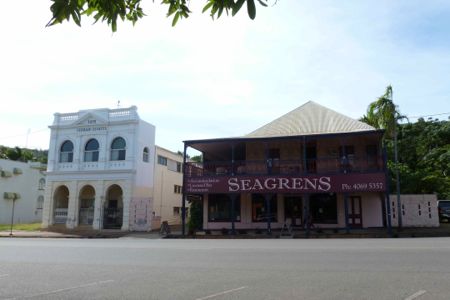
We'd reached the original starting point just along from the Cooktown Cafe, and Madam was ready for a spell. Just quietly, she wasn't the only one, but our morning ramble had failed to reveal a Commonwealth Bank auto teller and the wallet was going to need a cash injection at some point so I went on a little further without locating what I was looking for.
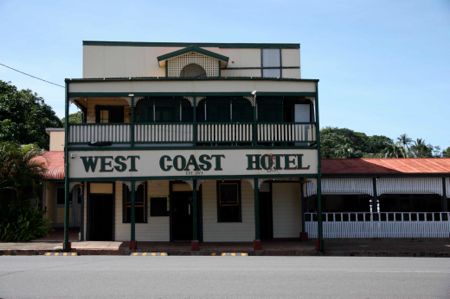
I saw machines from other banks along the way, so the technology has certainly reached this far north. Obviously, in this era of rationalisation and bank super profits actual physical branches are few and far between, which explains why the Quinkan Centre has to go to Mareeba to do the banking, but you'd suspect each of the Big Four would have an outlet hereabouts, so I was hypothesising something tucked around the corner at the Post Office, or strategically located outside the supermarket.
If all else fails, of course, there's always ask a local.
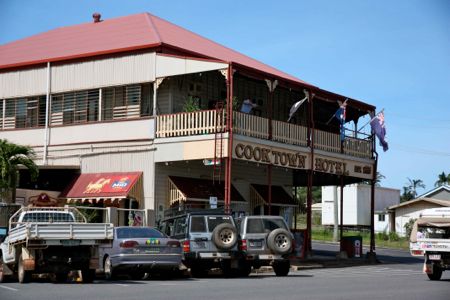
That's precisely what we were doing when I met Madam in the Community Arts Centre, which was once the ticket office at the railway station, and again when we'd pointed the car at the Information Centre, where we planned to refine the schedule for the next two days.
We'd allocated a day to head out of town, with lunch at The Lion's Den and a chance for Madam to get in some rainforest photography, and a day devoted to the same around town, so it was a case of checking local knowledge against possibilities.
To the south we'd been told Quarantine Bay was worth a look, and we could possibly get a bit beyond Helenvale, though the area surrounding The Lion's Den would probably keep us busy. That's good. Hughesy's legs are still disinclined towards much more cross-country rambling.
Back in and around town there's Finch's Bay, a walking track to Cherry Tree Bay, the Botanic Gardens, Grassy Hill, the Cemetery and sunset over the water to occupy the photographer and the Historical Society Museum to occupy the ex-historian, so it's not as if we're going to run out of things to do.
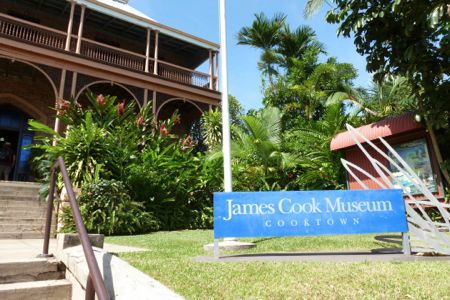
From the Information Centre we were off to the Captain Cook Museum, located in the old convent with plenty of explanatory material, not just about Jimmy Cook but also covering, in impressive detail when you're looking at an overview, the broad sweep of the region's history.

How impressive? Well, how about the information that in the 1920s a Chinese family business farmed twenty thousand hectares out around Laura. Lying in the predawn dark the following morning I did a spot of calculation. Twenty thousand hectares at ten thousand metres a go equals two hundred million metres. That's two followed by eight zeroes. If five fours are twenty, you take the seven zeroes and split them four and three to give a notional strip of farmland five kilometres wide and forty kilometres long (or vice versa). The actual dimensions you’d be looking at wouldn't have made that kind of tidy rectangle, but it's a pretty impressive figure.
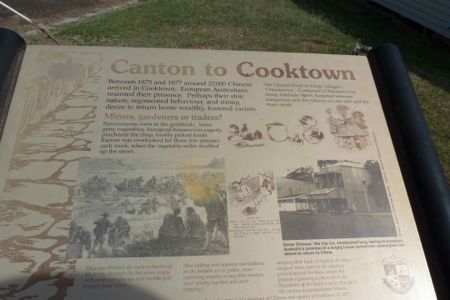
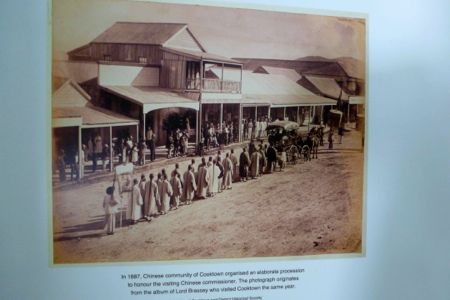
So, if you're looking for an excellent overview of the historical side of things, the James Cook Museum is definitely the way to go. I'm more interested in filling in the detail on my own version of the story, filling in the gaps in the memory, so Day Five has a visit to the other historical museum pencilled in to do that, because if there is a negative in the James Cook Museum (and I'll admit the possibility it's there but I managed to miss it) it's a lack of supporting material and references to add depth to the main narrative.
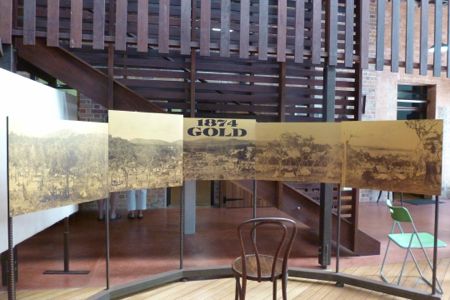
Summary: Strong on displays, short on supplementary material.
From the museum, however, with legs disinclined to further trekking, it was a choice between a light lunch and checking into the accommodation, and since it was just coming up to one o'clock, an hour ahead of standard check in time, lunch was the winner.
We weren't after anything substantial, so we headed over to Capers, which we'd passed on the morning stroll for coffee and nibbles (flour less chocolate slice this way, lemon tartlet for Madam) and then headed off to Milkwood Lodge, located a couple of kilometres out of town just off the main road.
Six pole houses in the rainforest delivers a quiet retreat, and it certainly looks like the way to go when you're looking at a couple of relaxing days away from the swing of things but close enough to get there if need be.
Questions about dining options produced a bid wrap for The Italian, a place I'd been inclined to miss on the basis of the and Thai tacked onto the end, suspecting an operation that was sort of neither fish or fowl, tackling two and not getting either of them right. How wrong I was! But more of that anon.
A power nap was enough to recharge the batteries and get me back onto the iPad to tap out the narrative, and I was pretty much out of the backlog when Madam decided she'd head up to Grassy Hill for a look and some photographic action. I could have gone, but we'd decided Thursday was in town and Friday was Lion's Den day, so I was keen to get the guts of the historical side of things tied up and finished by the time she returned.
We'd been advised to try Shadows of Mount Cook for dinner and since it was just down the road it seemed like an obvious first choice, but an investigatory phone call suggested they're not doing an open to the public dining bit any more, and brought another suggestion pointing us to The Italian, which is where we were pulling up around six-fifteen.
The wrap from Milkwood Lodge had a firm tick beside pasta Di Mare (assorted seafood, olive oil, garlic, fresh basil and a touch of Chilli) and a suggestion that we ask for it Wog style, something I would normally demur from doing, but I'm certainly glad I didn't.
It's BYO so we'd set off with a good bottle of SSB, which went down very nicely with one of the best Italian meals I've had in a long time, and since I've been eating Italian style for much of the past forty years...

